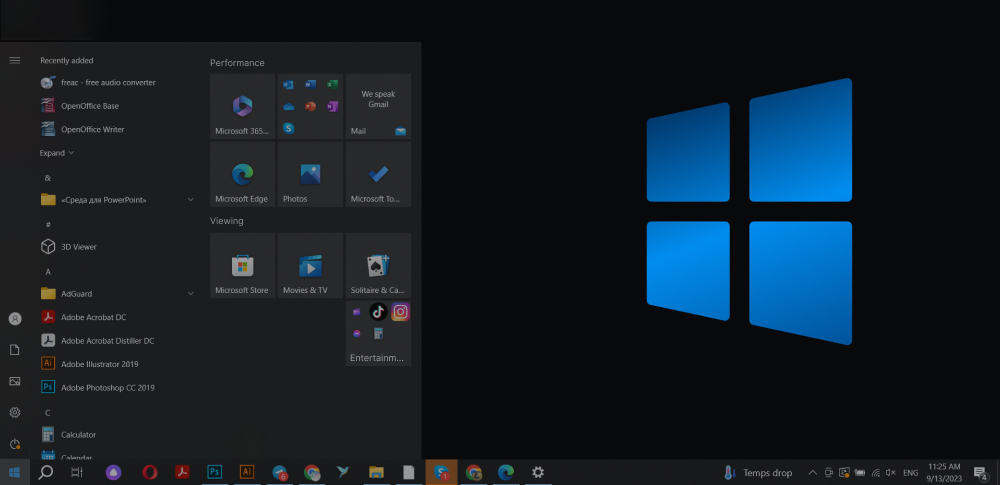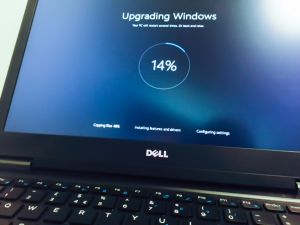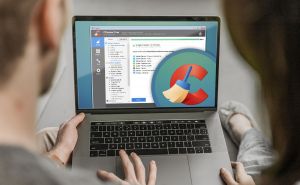 How to configure the taskbar in Windows 10
How to configure the taskbar in Windows 10
As you might already know, the taskbar is one of the main parts of Windows' user interface, and it is useful for quickly launching applications, services and many other tasks. Just like in previous versions of Windows, the taskbar is, by default, located at the bottom of your screen and contains the Start button, the system tray area and any pinned programs that you might have placed on it. Even if Windows 10 keeps the basic functionality and appearance of the previous version taskbars, it also brings new features such as the "Search box", the "Task View", the option to quick-access to the "Marketplace" and launch "Cortana", the digital voice assistant.
Just like with the earlier versions of Windows, the taskbar can be customized, and below I will show you how easy it can be.
Pinning and unpinning applications to/from the taskbar
One of the taskbar's many uses is its ability to let you quickly launch applications. This way, you won't have to open "My Computer" and navigate to your installation folders each time you want to start a program. Or, if you are like me, you might want to keep your desktop clean instead of being filled with useless icons.
Pinning and unpinning applications to and from the taskbar is a very simple process and all you have to do is right click the program's executable files or shortcut and select the "Pin to taskbar" option from the available list (see image). You can add programs to the taskbar by right-clicking on their executable files or shortcuts from their installation folders, from the desktop, after a search query or after launching them by right-clicking their icons from the taskbar.
Pin from File Explorer
Pin from Search
In case if you want to remove applications pinned to the taskbar, you can easily do that by right-clicking on their icons and selecting the "Unpin this program from the taskbar option". It's that simple.
Unpin program
Change taskbar and Start Menu proprieties
Now that you know how to pin and unpin applications to and from the taskbar, it is time to customize the taskbar itself. In order to do that, just right-click on the taskbar and click on the "Proprieties" option. From here, you can choose to lock and unlock the taskbar in order to prevent or allow adjusting it whenever new icons are added and automatically hiding it when it is out of focus (it will appear when the mouse pointer will hover the taskbar area). Needless to say, these features date back from Windows XP, so, you might already be familiar with them.
Taskbar
Proprieties Window
In addition, you can quickly modify the position of the taskbar by clicking on the location drop-down menu and selecting the desired position (bottom, left, right or top)
Taskbar position
You can even quickly customize which notifications you want Windows to provide you with by pressing the "Customize" button next to the "Notification area".
Notification Area
If you want to change the way you view running applications in the taskbar and display their labels instead of just their icons (default mode), you can easily do that by selecting the desired behavior from the "taskbar buttons" drop-down menu.
Taskbar buttons
Toolbars
Last but not least, you can add various toolbars to the taskbar right before the system tray area, by clicking on the "Toolbars" tab and checking the desired items.
Toolbars Area
Normally, the Windows 10 operating system puts 3 toolbars at your disposal, so that that you could add them to your taskbar.
- Address - This toolbar will place a small search box on your taskbar which you can use to quickly navigate to any desired website, and it will open them using your default web browser (if you haven't set any, you will be asked to do this when launching a web page, like in the image below).
Address Toolbar
- Links - This toolbar will place all of the websites you have added to "Favorites" while using the new Edge browser. At the moment, the "Links" toolbar works only with Edge, but, maybe in the future Microsoft will make this feature available for other browsers as well.
- Desktop - This toolbar is quite self-explaining. It will help you quickly access files and folders from your desktop, as well as some additional shortcuts, without having to minimize all of your opened applications. This can be quite useful if you want to access a text document from your desktop or you quickly access folders from your hard drives.
But that's not all the toolbars that Windows allows you to add. You can easily create your own toolbars and add them to the taskbar. For example, you can create a folder containing the shortcuts of all your games and turn in into a toolbar. This way, you can easily launch them with just a click of a mouse. In order to do that, all you have to do is right-click the taskbar, select the "Toolbars" menu item and click on the "New toolbar..." option. Then, simply navigate to the desired folder and select it.
Add custom toolbar
Navigation
This tab only contains one option (which, in my opinion, could have been placed under the fist tab) that will simply replace Command Prompt option with a Windows PowerShell window whenever you will right-click on the Start button (left corner from the taskbar).
Navigation
Additional Customizations
Colors
Beside the mentioned customization options for your taskbar, there are other modifications that you can perform in order to further personalize it. One of them is the possibility to change the taskbar's color and transparency. To do that, you will have to access the "Colors" menu under "Personalization" option (which can be accessed by right-clicking on the desktop, opening the Settings window or after a quick search). From here you can select to make the taskbar transparent, make it the same (or similar) color to your background or select a specific accent color for it.
Taskbar Colors and Transparency
System Tray and Notification Area
Even though it is considered an "independent" part of taskbar, you can also customize the system tray and notification area. The first thing you will have to do is to access the customization options (simply type "notification settings" in the search box). Once you have done that, a window will appear, from where you will have to click on the "Select which icons appear on the taskbar" and simply toggle the desired icons on or off.
Toggle Icons
Conclusion
As you can see, there are many ways in which you can customize your taskbar, choose which icons to display and how to display them, set the desires position and more. Compared to earlier versions of the Windows operating system, Windows 10 provides you with many new customizable features, some of them good for everyday use (like the search bar) and some of them not. If you have any questions regarding taskbar customization, you can leave them in the comment section below.





Comments
Subscribe to comments